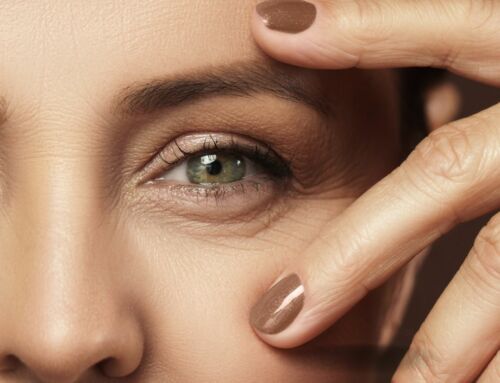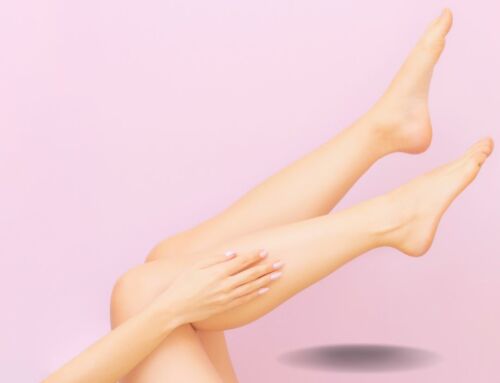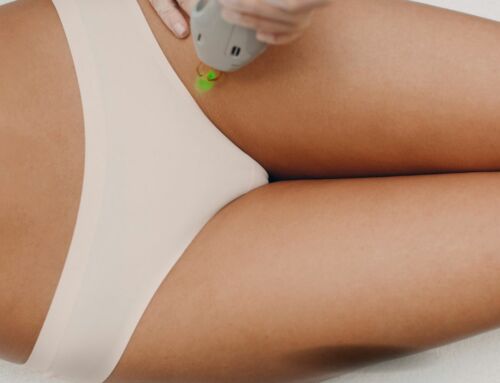Did you know that dull, discoloured skin trumps fine lines and wrinkles as the number one indicator of skin ageing? A recent study carried out by Danish researchers shows that most people cite an uneven complexion as the most prominent inhibitor of youthful-looking skin. Annoyingly, hyperpigmentation is one of those conditions that can materialise out of nowhere – one day you’re basking in the sun, the next you’re plagued with age spots of every shape and size. But whether you’re battling melasma, sun damage or dark spots left behind from breakouts, understanding the condition – its triggers and aggravators – is ultimately the key to preventing pigmentation irregularities and choosing an effective course of treatment.
What is hyperpigmentation?
It occurs when melanin – the pigment that gives skin, hair and eyes their natural colour – is overproduced in certain areas. This causes localised dark spots or patches on the skin. These patches can be light brown to black in colour and will often vary in terms of size and shape. Freckles, age spots and post-acne marks are all examples of hyperpigmentation. While it can affect anyone at any given time in their lives, it is most commonly seen in medium to dark skin tones. This is because melanin is much more present in darker skin, and therefore much more susceptible to irregularity. Although the condition is considered harmless, it can cause significant distress to those inflicted as it tends to affect areas of skin that are consistently exposed to the environment such as the face, hands and decolletage. There are many different forms of hyperpigmentation, but for the most part they can be divided into three categories:
1. Hormonal
When oestrogen is elevated above a normal level, it can lead to a condition known as melasma that causes large areas of skin to darken. This is why many women notice flat, dark patches of skin developing during their pregnancy or after starting the contraceptive pill. In fact, it affects so many pregnant women (up to 90%) that it has been colloquially termed the mask of pregnancy. The good news for melasma sufferers is that the condition can often resolve itself once oestrogen levels have been rectified – after birth or after coming off hormonal contraceptives for instance. The bad news? It can take anywhere from a couple of months to a few years to fade entirely.
2. Inflammatory
Post-inflammatory hyperpigmentation (PIH) is what occurs after a pimple or bite has finished healing. It is essentially the skin’s natural response to any injury that causes the skin to become inflamed. As the inflammation subsides and the lesion begins to heal, the skin can often produce too much melanin causing the formerly-damaged skin to darken. PIH will improve over time, even if it’s left untreated, but this can take anywhere from three months to three years depending on the severity of the pigmentation. Generally speaking, the more inflammation there is, the more significant the PIH will be.
3. Sun-induced
This typically refers to age spots (or liver spots as they are otherwise known). This kind of hyperpigmentation is caused by sun damage. Despite the name, age has nothing to do with the condition. Anyone can be affected at any point in their lives. Interestingly, age spots do not necessarily appear at the same time that the skin is afflicted. Oftentimes you will find that sun damage accumulated in the 20s can start to surface in the 30s or 40s, which is why it’s imperative to use sunscreen every day from an early age.
How can you prevent hyperpigmentation?
All cases of hyperpigmentation are worsened by sun exposure, so proper suncare is an absolute essential. Wearing a daily broad spectrum sunscreen with an SPF of 30 or above is the best way to keep uneven pigmentation at bay. Protective clothing such as sun hats and sunglasses should also be worn to enhance protection, and you should aim to seek out shade wherever possible. For those who are prone to blemishes, it’s important not to pick at the skin. Even when an extraction is performed correctly, it can still deepen the inflammation of a pimple increasing the likelihood of post-inflammatory hyperpigmentation.
How can you treat hyperpigmentation?
Chemical Peels
At Medik8 we offer a professional in-clinic treatment called whitePeel that can be used to target dull, hyperpigmented skin. Using advanced exfoliating acids, it melts away away dead, discoloured skin while delivering depigmenting agents deep within the skin to tackle hyperpigmentation at a cellular level.
Although mild peels such as whitePeel are generally considered safer for all skin types, those who are prone to PIH and those with darker skin should be careful as this treatment can inflame the skin and worsen the condition if it’s not carried out properly. Always seek out the advice of a highly trained professional that specialises in your specific concern.
Oxyresveratrol
In previous years, hydroquinone was widely used to treat hyperpigmentation. But recently there has been some controversy surrounding its safety. For this reason, Medik8 researchers developed patented Oxy-R technology, a high-performance brightening formula clinically proven to deliver radiant, even-toned skin in just 14 days. Chemically similar to well-known resveratrol with an extra “oxy” group, oxyresveratrol (Oxy-R) ensures an even skin tone by inhibiting the enzyme responsible for excess melanin production (tyrosinase). A remarkable development in the field of brightening skincare, this high-performance ingredient has been shown to be up to 32x more effective than kojic acid, another widely use hyperpigmentation ingredient.
Chemical Exfoliators
Has such as mandelic acid are great at reducing the appearance of hyperpigmentation. When applied topically, they gently dissolve the bonds that hold dead skin cells to the surface of the skin, revealing the new, radiant cells underneath. Because pigmentation affects multiple layers of skin, you will need to be consistent in order to see the results, but it’s a great way to speed up the recovery process, especially when used in conjunction with oxyresveratrol.





